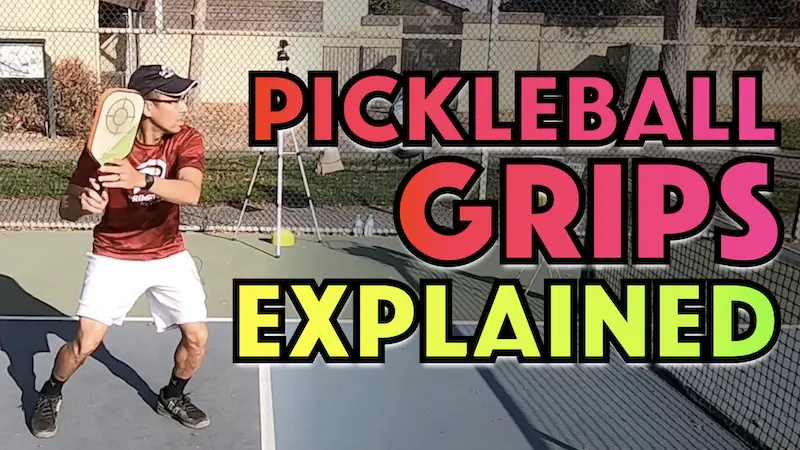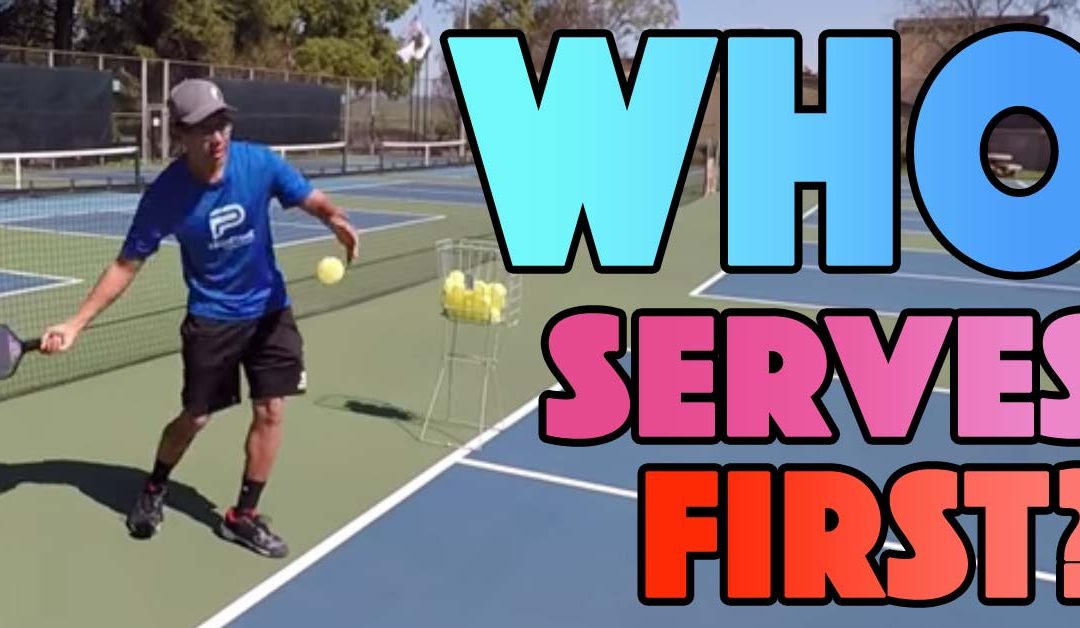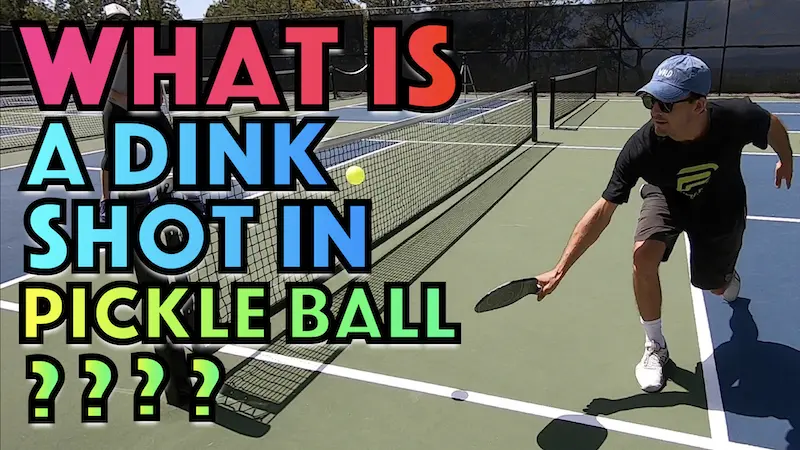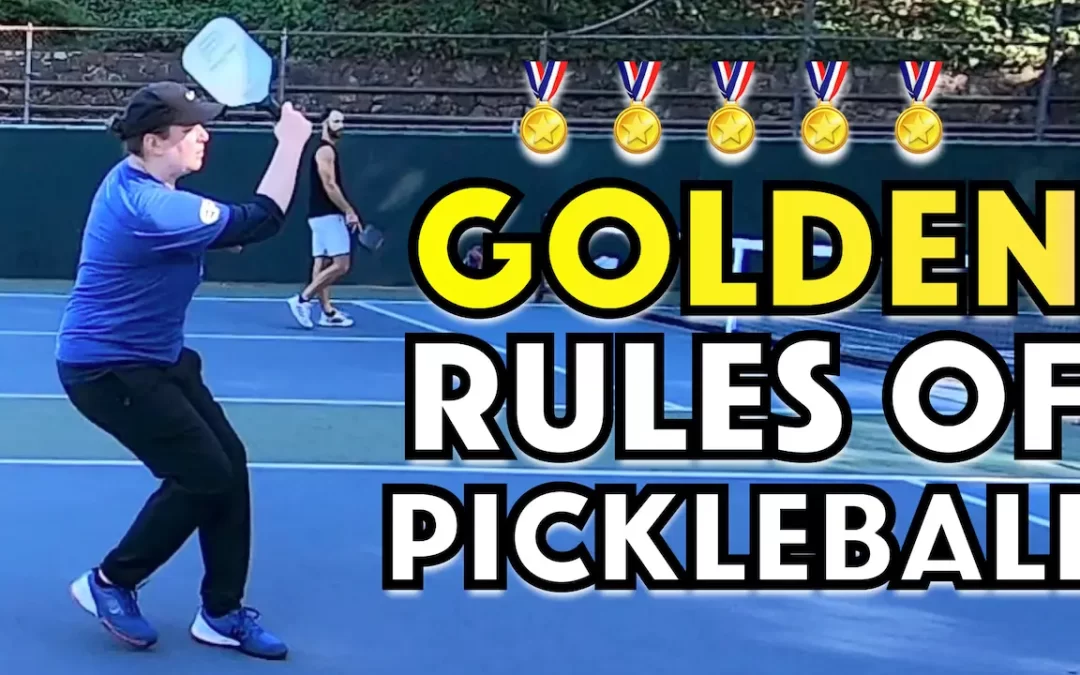Pickleball has been around since the late 60s and has recently grown in popularity. And in that time, the official rules of pickleball have not changed all that much.
The game is meant to be played on a badminton-sized court with a tennis heigh net.
The equipment needed is relatively basic and boils down to paddle, a net and a ball with holes in it that largely resemblers a whiffle.
While there are certainly more than five rules for pickleball, beginners and social players just need to know the following 5 basic rules to enjoy hours of fun as they chase the ball around the court.
Are you ready to learn the 5 rules of pickleball?
Basic Pickleball Rules
The game of pickleball is played either as a singles game or by playing doubles with two players per team. The game is simplified by having both singles and doubles team matches adhere to the same set of rules.
To avoid arguments and to ensure fair play, you need a basic understanding of the scoring system in pickleball.
Rule 1. How to Score Without Getting Confused
Doubles is far more popular than singles and doubles scoring is more confusing then singles scoring so we’ll be primarily covering rules and scoring for doubles.
Listening to the score being called on each point can be quite confusing to the uninitiated. So, let’s simplify it so that you’ll know exactly what each call means.
Pickleball games will usually be played until one side or player reaches 11 points. In addition, the winner needs to be 2 points ahead when they reach 11.
As an example, if you are on 11 points and your opponent is on 9 points, then you win the game. You will not win the game if the score is 11 to 10. In that case, keep playing until you reach a 2-point margin.
To extend the example, if you were on 11 and your opponent was on 10 and you won the next point, you’d have a score of 12 to 10 and you’d win the game.
The Call
When the score is called before each serve, it references the serving team or player’s score first, then the receiving team or player’s score second, and then third, in doubles only, the number representing the number of the server. The third number is always either a 1 or a 2.
So, 1-0-1 would mean that the team serving next has one point, their opponents have no points and the serving team is on their first server.
In doubles, each team has the opportunity to serve at least twice per their team’s turn to serve because each player on the team gets at least one chance to serve.
The only exception to this is for the very first player to serve in each game. Once that player loses their serve, the opponents get to serve the next point. From then on, each player gets a turn every time their team becomes the serving team.
Rule 2. The Service Sequence & The Serve
At the start of the pickleball game, the player on the right side of the court serves to the receiving player that is in the diagonally opposite court from them. This is true for both singles and doubles.
In doubles, the first server will keep serving until the serving team commits an error, and then the serve will pass onto the second server on that team (except the first time as explained above). As they continue to win points, the serving team will alternate sides from right to left and from left to right so that each player on the returning team gets a chance to receive the serve.
The receiving team does not switch sides with their partner after each point, only the serving team does.
If the serving team makes its second fault, they stay where they are and pass the ball to the receiving team to start serving. The player on the right serves first and this pattern repeats throughout the entire game.
When serving, there are three things to keep in mind for the serve to be legal.
1. Underhand Swing
The serve must always be made with an underhand motion.
This means that the paddle must be below the height of the ball coming into contact and be above the height of contact with the ball immediately after making contact with the ball.
Also, the highest point on the pickleball paddle must always be lower than the player’s at the point of contact with the ball.
2. Contact with the Ball Below the Waist
When swinging to hit the ball, your paddle contact with the ball must be at a point below your waist level. This is practically done by keeping your contact point below your belly button.
3. Stand Behind the Baseline
Position yourself behind the baseline with both feet. If any part of either foot touches the baseline at anytime before contact with the ball during your serve, then you commit a foot fault.
4. Serve Target
You serve the ball to the opposite side of the court into the service box diagonal from you.
The ball must land past the non-volley zone line, otherwise, it is a fault.
The ball can touch the opposing sidelines, center line, and baseline and will be considered in, while the ball landing on the non-volley zone line or outside the court markings is considered a fault.
The Drop Serve
You can either hit the ball directly by dropping it and making contact before it touches the ground (traditional serve) or you can allow the ball to bounce before hitting it (drop serve).
You may not make the ball bounce higher by throwing it down, you can only drop it from any height you wish.
It is worth noting that professional players typically do not use a bounce before serving, but hit the ball directly after they drop it out of their hands.
Rule 3. Double Bounce Rule
The two-bounce rule is simple to follow.
What it means, is that you must let the ball bounce first before hitting it when you are the receiver of the serve and the serving team must then allow the return to bounce before hitting it back over the net.
The ball, therefore, bounces twice after being served, once on the service return and then once again on the serving side.
After that, any player is free to volley to their heart’s content, except for when you’re standing inside the non-volley zone.
Rule 4. Non-Volley Zone (“The Kitchen”)
If you are standing in the non-volley zone, about to step into it or onto the non-volley line, you have to let the ball bounce before making contact with it and sending it back over the net.
The non-volley zone line extends 7 feet on either side of the net and is demarcated by a line that runs the entire width of the court from sideline to sideline.
One important rule to note is that if the ball hits you while you are standing in the non-volley zone, you lose the point.
You may reach forward into the non-volley zone to volley a ball, but you may not then allow your momentum to carry you forward into the non-volley zone.
Rule 5. Who Serves First?
This shouldn’t be a contentious issue, so any fair method of deciding who serves first is fine. You can toss a coin, pull straws or write 1 and 2 on pieces of paper to decide who serves first.
Just remember that the player or team that serves first only has one serve and not two on that team’s very first turn to serve.
If you make a fault while on the first serve of the game, you lose the serve and your opponent gets to serve next.
Every time it is your team’s serve after that, each player on team will get their turn to serve. This is referred to as the First Server Exception Rule.
Final Thoughts
Once you understand the scoring system, how the score call out before each serve goes, and how the side switching works, pickleball becomes easier to understand.
All the other key rules are relatively straight forward to understand:
- Serve into the service box diagonal from you and clear the non-volley zone line.
- Adhere to the double bounce rule on each point.
- Don’t step into the non-volley zone either while volleying or when carried in by your momentum immediately after you’ve volleyed.
And lastly, have fun. After all, that’s what pickleball is all about.
If you want to learn more about the rules and how to improve your pickleball skill levels, check out our other articles to help.






